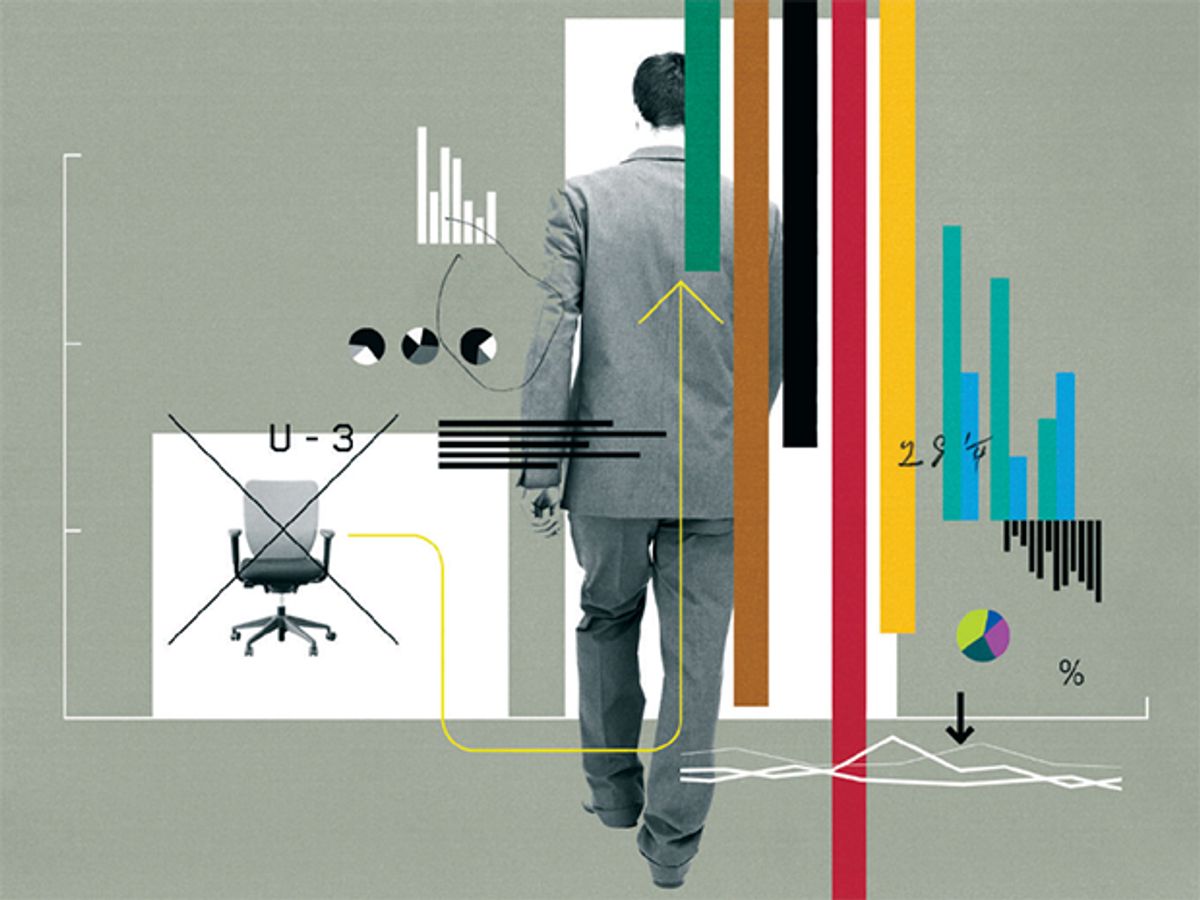Many economic statistics are notoriously unreliable, and the reason often has to do with what’s included in the measurement and what’s left out. Gross domestic product offers a good example of a measure that leaves out key environmental externalities, such as soil erosion, biodiversity loss, and effects of climate change.
Measuring unemployment is also an exercise in exclusion. Casual consumers of U.S. economic news are familiar with only the official figure, which put the country’s total unemployment at 4.8 percent at the beginning of 2017. But that is just one of six alternatives used by the U.S. Bureau of Labor Statistics to quantify “labor underutilization.”
Here they are, in ascending order (with rates, again, for January 2017). People unemployed 15 weeks or longer as a share of the total (civilian) labor force: 1.9 percent. People who lost jobs and who completed temporary jobs: 2.3 percent. Total unemployment (the official rate): 4.8 percent. All unemployed people plus discouraged workers, as a share of total and discouraged labor force: 5.1 percent. The previous category enlarged by all people only “marginally attached” to the labor force: 5.8 percent. And finally, the last category plus those who work only part time for economic reasons (that is, they would prefer to work full time): 9.4 percent. These six measures present quite a spread of values: The official unemployment rate (U-3) was only about half of the most encompassing rate (U-6), which was nearly five times as high as the narrowest measure (U-1).
If you lose your job you count as unemployed only if you keep looking for a new one; otherwise, you never get counted again. That is why when trying to get closer to the “real” unemployment rate you must look at the labor force participation rate, which has recently been in decline. In early 2007, the U.S. labor force participation rate for people 16 years and over was 66.4 percent; by the end of 2008, a few months into the world’s largest economic downturn since World War II, it was still at 65.8 percent. Its subsequent slide bottomed out in September 2015 at 62.4 percent, and by early 2017 the rate was marginally higher, at 62.9 percent. Nearly 95 million U.S. citizens above the age of 16 were not part of the labor force—a historic record.
This decline has come out of two countervailing trends: Male labor participation, now at 69 percent, has been falling ever since the early 1950s, when it peaked at about 86 percent. At the same time, female participation was rising until the year 2000 and has fallen since by less than 10 percent (it’s now at about 57 percent).
As expected, the rates are much lower for the young (16 to 19 years old) in general (just 35 percent, compared with 60 percent in 1980) and for young African-Americans in particular (30 percent, compared with 41 percent in 2000). But even after we take into account the participation rates, we still do not get the full appraisal: Pure quantities do not capture essential qualities.
There has been some encouraging news on employment quality: The latest Gallup polling on U.S. jobs shows that 72 percent of U.S. employees are completely satisfied with their relations with coworkers and nearly as many feel physically safe in their workplaces. However, only 33 percent are satisfied with the money they earn and only 45 percent with the recognition they receive.
The complex reality of (un)employment can never be caught by aggregate numbers. Not a few people have left the labor force early and eagerly because they could afford to do so (hence they should be excluded when searching for the “real” unemployment rate). Others are trying desperately to get back into it. Many who are fully employed are unhappy with their lot but cannot change jobs easily or at all, because of their skills or family circumstances.
Numbers may not lie, but which truth do they convey?
This article appears in the May 2017 print issue as “Unemployment: Pick a Number.”
